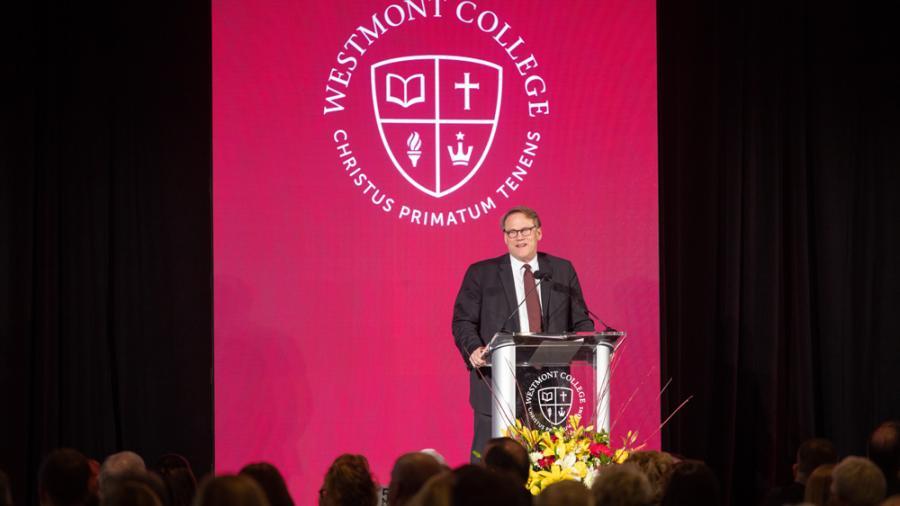Westmont Magazine Letter from the President

THE LIBERAL ARTS
Peter Drucker, the father of modern management, once observed that a liberal arts education provides the best possible preparation because it teaches us how to take discrete areas of knowledge and place them into a meaningful whole. The liberal arts teach us how to think. They teach us an approach to learning that invites us to see the interrelationship of all knowledge. They cultivate intellectual humility as we discover the wide, vast universe of human knowledge. This recognition invites a lifetime of learning.
By anchoring our mission to the liberal arts, we connect with a 2,500 year-history dating back to Socrates, Plato and Aristotle. In the ancient world, the liberal arts were designed to provide a graduated curriculum that mirrored human development. It began with mastery of the verbal arts of grammar, logic and rhetoric followed by grasping the mathematical arts of arithmetic, geometry, astronomy and music. The comprehensive curriculum unfolded in a sequential manner. From the study of grammar, we learn the right use of language; from logic, the right use of thought; and from rhetoric, how to put together the right use of language with the right use of thought to make compelling arguments that move society. From the study of arithmetic, geometry, astronomy and music, we learn higher-order thinking and the proportions and proportionality that help us rank competing commitments as we build social policies that lead to human flourishing.
The ancient world always studied the liberal arts as a means to something greater, training minds in particular subjects to transfer intellectual learning to addressing the great questions of life. Beginning with Clement of Alexandria (150-215), Christians considered the role and value of the liberal arts to be central in cultivating understanding of our individual life, our corporate responsibilities, our relationship to God and our ultimate quest for meaning and purpose. Over time, the purposes of a liberal arts education developed into a fourfold progression: the acquisition of language skill; the mastery of math skills; the consideration of the nature of ethics, the proper role of politics and subjugation of our unruly passions; and the proper study of God.
Earlier, Aristotle emphasized that we should not look “…for the same measure of precision in all things, but for the level of precision appropriate to each discipline.” The liberal arts illustrate how we learn the measure of truth appropriate to each category. Later in the 11th and early 12th century, Hugh of St. Victor amplified this understanding by showing that we can work out our salvation by combining a high view of the liberal arts with productive labor. He expands the original Greek and early church idea of the liberal arts beyond the “philosophic arts” of Plato and Augustine and the “practical arts” of Cicero by adding a third component: the “productive arts.”
Today, the liberal arts curriculum still animates life on campus, but it has broadened to incorporate the newest areas of human learning, including the emergence of technology, data analytics, AI and machine learning (and the pending transition and displacement of humans by machines), innovation and entrepreneurship, moral and emotional intelligence, systems thinking, critical thinking, and integrative thinking that leads to creative problem-solving. We believe a Westmont education will give our graduates the capacity to sustain and integrate all these known and emerging challenges as we move deeper into the 21st century.
